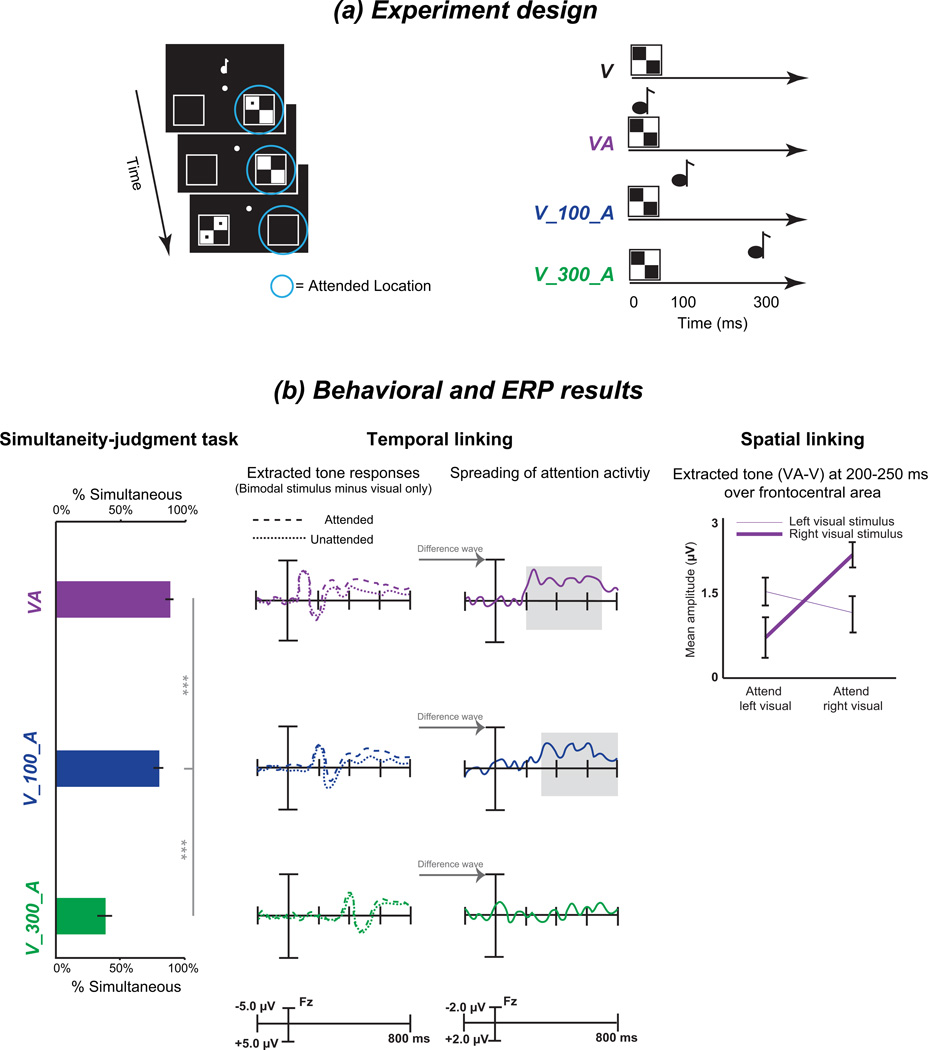Figure 5.
Temporal and spatial constraints on the cross-modal spread of attention. (a) Experimental design and types of stimuli. Visual stimuli were presented in the left or right peripheral square, whereas auditory stimuli were presented centrally. The visual target stimulus consisted of a checkerboard containing two dots. The attended locations are marked with the blue circle. The participants were asked to detect the target stimulus that was presented at the attended locations, which is illustrated here as the right side. There were four types of stimuli, including a visual stimulus only (V), a visual stimulus simultaneous with an auditory tone (VA), a visual stimulus with a tone delayed by 100 ms (V_100_A) and a visual stimulus with a tone delayed by 300 ms (V_300_A). (b) The behavioral and ERP results for conditions that correspond to different temporal gaps between the visual and auditory stimulus are illustrated. The behavioral simultaneity-judgment task revealed that the subjects were much more likely to judge the visual and auditory stimuli as occurring simultaneously when the two stimuli were presented simultaneously (VA) or with a temporal gap of 100 ms rather than with a temporal gap of 300 ms. Regarding the ERP results, the tone responses were extracted by subtracting the response to the visual-only stimulus from that for the combination of the visual and auditory stimuli in either the attended or unattended location. Differences in the extracted tone responses between the attended and unattended locations were found over fronto-central areas using a time window of 200–700 ms or 300–800 ms in the VA and V_100_A conditions but not in the V_300_A condition. Furthermore, the contra-laterality of the spreading-of-attention effect was observed only in the VA condition. Specifically, the mean amplitude of the extracted tone (VA-V) response over the fronto-central area during the 200–250 ms time window exhibited the interaction between the attended side and the presented location of the visual stimulus. Adapted with permission from the corresponding author (Donohue et al., 2011) [Copyright © 2011 the authors 0270-6474/11/317982- 09$15.00/0]

